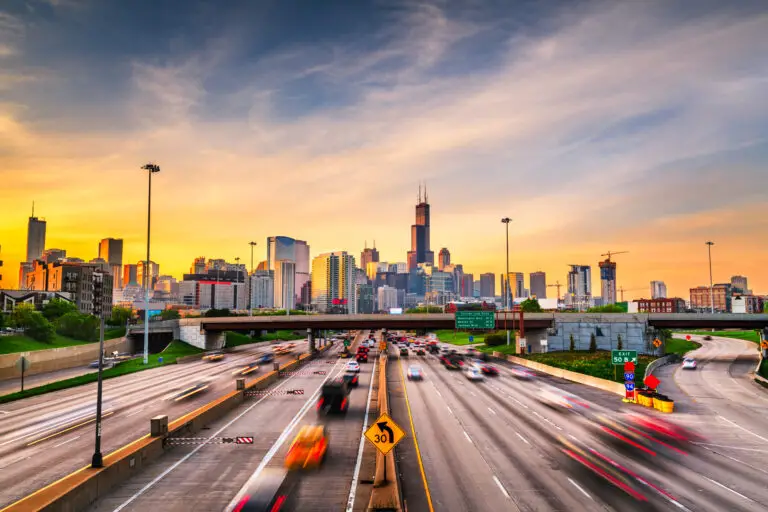Hawaii Car Seat Laws 2024 (Rear, Forward & Booster)

According to Hawaii car seat laws, children under the age of 10 years have to be secured in an appropriate child restraint. These include a rear-facing seat for infants and forward-facing and booster seats for toddlers and young children. The penalties for violation of the law range from $100 to $800.
Disclaimer: This content does not constitute legal advice. It is solely for informational purposes. Always check the original source of the law for the latest version.
- Rear-Facing
- Forward-Facing
- Booster
- Front Seat
- Seat Belt
- Taxi Seat
- Ridesharing Seat
- Replacement
- Alone in Car
- Choosing a Seat
- Installation Help
Hawaii Car Seat Laws
Hawaii Rear-Facing Car Seat Law
According to the rear-facing car seat law in Hawaii, a child under the age of two years must be restrained in a rear-facing seat with a harness. (1) The infant seat must meet federal safety standards.
The rear-facing car seat age in Hawaii is 2 years. Children should continue riding rear-facing till they reach the height and weight limits of the car seat as prescribed by the manufacturer.
A first violation of the Hawaii rear-facing child seat law carries a fine of $100. A second violation will attract a fine between $250 and $500.
A third and subsequent violation will be fined between $500 and $800. In all three cases, the person will have to attend a child passenger safety class prescribed by the judiciary and pay an additional surcharge.
Age: Newborn to 2 years
Penalty: $100 for a first-time, $250-$500 for a second violation, $500-$800 for a subsequent violation.
Hawaii Forward-Facing Car Seat Law
According to the forward-facing car seat law in Hawaii, a child older than 2 years but less than 4 years has to be secured in a forward-facing seat with a harness. (1) The seat must comply with federal motor vehicle safety standards.
The forward-facing car seat age in Hawaii is 2 to 4 years old. However, children should continue riding in their forward-facing seats till they reach the maximum height and weight limits prescribed by the manufacturer.
Violating the Hawaii forward-facing child seat law for the first time carries a fine of $100. A second violation will be fined between $250 and $500. A third and subsequent violation will be fined between $500 and $800. In all three cases, the person will have to attend a child passenger safety class prescribed by the judiciary and pay an additional surcharge.
Age: 2 to 4 years
Penalty: $100 for a first-time, $250-$500 for a second violation, $500-$800 for a subsequent violation.
Hawaii Booster Seat Law
According to the child booster seat law in Hawaii, a child older than 4 years but less than 10 years must be secured in a booster seat. However, a child who is taller than 4’9” in height can be restrained with a seat belt. (1)
When choosing a booster seat, you can opt for either a high-back or backless booster seat. While the booster seat age in Hawaii is 4 years, children should move to a booster only after they surpass the maximum height and weight limits of their forward-facing seat.
The first violation of Hawaii booster seat requirements will be penalized $100. A second violation will be fined between $250 and $500. A third and subsequent violation carries a fine of $500-$800. The person will also have to attend a child passenger safety class and pay an additional surcharge.
Age: 4 to 10 years
Height: Shorter than 4’9”
Penalty: $100 for a first-time, $250-$500 for a second violation, $500-$800 for a subsequent violation.
Hawaii Child Front Seat Law
There is no child front seat law in Hawaii. However, the Hawaii Department of Transportation recommends that children ride in the backseat as it is safer for them. (2)
Under Hawaii car seat regulations, a child under the age of 10 years must be secured in a car seat. (1) Thus, if absolutely necessary, a child can ride in the front seat in a child restraint that is appropriate for their height and weight. But a rear-facing seat must never be placed before an active airbag.
The front seat age in Hawaii is absent. As per the recommendations of the American Academy of Pediatrics (AAP), children older than 13 years should ride in the front seat. It is best to follow these requirements to ensure the safety of your child.
Age: 13+ years
Hawaii Child Seat Belt Law
According to the child seat belt law in Hawaii, children older than 10 years can wear an adult safety belt. Those who are older than 7 years but taller than 4’9” can also wear a seat belt. (1)
Seat belt rules in Hawaii apply to all passengers, whether in the front seat or the backseat. A violation of Hawaii children’s seat belt law carries a fine of $45 and a surcharge of $10. (3)
In Oahu, Maui, and Hawaii, it carries a fine of $102, while in Kauai, it is $112. (4) The driver of the motor vehicle will receive one citation for every occupant who is not wearing a seat belt.
Hawaii state law exempts emergency and mass transit vehicles from the requirements of seat belt law. A person who has a certified condition that prevents them from wearing a seat belt is also exempt.
Age: 10+ years
Height: Taller than 4’9”
Penalty: $102 in Oahu, Maui, and Hawaii; $112 in Kauai.
Hawaii Taxi Child Seat Law
According to the taxi child seat law in Hawaii, taxis are not required to have a car seat. Commercial vehicles are exempt from following Hawaii child seat laws.
These include vehicles that transport people for hire. Hence, taxis are exempt and the driver will not be responsible for providing a taxi child seat in Hawaii.
However, you should carry a federally approved child passenger safety seat that complies with car seat laws in Hawaii. If your child is under 2 years old, you should carry a rear-facing seat.
For children between 2 to 4 years of age, the law prescribes a forward-facing seat. Children between 4 to 10 years of age who are shorter than 4’9” should be restrained in a booster seat. (1)
Hawaii Ridesharing Child Seat Law
The ridesharing child seat law in Hawaii is unclear. Child seat requirements in Hawaii place the responsibility of properly securing children on the operator of the vehicle. However, they do not mention ridesharing services such as Uber and Lyft. Nor do they specify who should provide a child seat.
In such a scenario, it is recommended that either the parents/caregivers or the driver provide an appropriate car seat. For infants under 2 years old, this includes a rear-facing car seat. For toddlers between the ages of 2 and 4 years, you should carry a forward-facing seat. Older children between the ages of 4 to 10 years who are shorter than 4’9” have to be secured in a booster seat. (1) You can also carry a versatile all-in-one seat.
Hawaii Child Seat Replacement Law
There is no specific child seat replacement law in Hawaii. The National Highway Traffic Safety Administration recommends replacing your car seat if your vehicle is involved in a moderate or severe accident in Hawaii. This is because the car seat may have defects that are not easily visible.
In case of a low-impact accident, there is no urgent need to replace the child safety seat. A crash is said to be a low-impact one when no passenger sustains injuries, the airbags didn’t deploy, there was no damage to the car seat and the vehicle could be driven away from the crash site.
In addition to child seat replacement after an accident, you must also replace the seat after it has passed its expiry date as prescribed by the manufacturer or your child has outgrown it.
Leaving Child in the Car in Hawaii
According to the law on leaving a child in a vehicle in Hawaii, it is illegal to leave a child younger than 9 years with a minor who is under 12 years old in a vehicle for 5 minutes or longer. (5) The person will be held responsible for leaving a child in the car in Hawaii regardless of whether they were charged with the care or custody of the child.
Leaving a child unattended in a vehicle even for five minutes is dangerous. The child may suffer heatstroke, dehydration, abduction, injury, and in worst cases, death. Heatstroke is the most common danger. The temperature inside the vehicle can rise quickly due to which the child may suffer a permanent disability or die within minutes.
Choosing a Child Car Seat in Hawaii
When choosing a car seat in Hawaii, you can refer to the recommendations by the Keiki Injury Prevention Coalition.
For infants and toddlers, a rear-facing seat is the best car seat to use in Hawaii. They should ride these till the age of 2. Once they outgrow it, you can place them in a forward-facing seat with a harness and tether.
Young children shorter than 4’9” should be placed in a belt-positioning booster seat. The best booster seat to use in Hawaii is the one that perfectly secures the child in the lap and shoulder belt. It can be a high back or backless booster seat.
Car Seat Installation Help in Hawaii
It is important to install child passenger safety seats in Hawaii as per the manufacturer’s instructions. It can be difficult to correctly install a car seat, especially if you have not done it before. You have to follow the car seat manual as well as your vehicle manufacturer’s manual.
To ensure that your car seat is safely installed, you can get it inspected by a certified child passenger safety (CPS) technician. Some of the places where you can get assistance are:
- Keiki Injury Prevention Coalition: It has a comprehensive list of car seat inspection stations.
- Adventist Health Car Seat Checks
- The Queen’s Medical Center
- Safe Kids Hawaiʻi
Hawaii Car Seat Safety Resources
- Hawaii Department of Transportation: The official website of the state department has all the information about car seat laws as well as safety tips to choose the right car seat for your child.
- Keiki Injury Prevention Coalition: Established by the Hawaii Department of Health, this organization works toward minimizing injury in kids in Hawaii. It also has tips regarding each type of car seat and how to use them correctly.
- Hawai’i Police Department : The Hawaii Police Department also contains relevant car seat information for parents. It also conducts periodic car seat inspections.
- Safe Kids Hawaiʻi: Together with Kapi’olani Medical Center for Women and Children, it provides vital resources on car seat safety.
FAQ
How long should a child ride in a rear-facing car seat in Hawaii?
Under the law, a child should ride in a rear-facing car seat till the age of 2 years. This is also in line with general best practices.
Can you put a rear-facing car seat in the front seat in Hawaii?
You can put a rear-facing seat in the front seat but the passenger-side airbag must be deactivated. It is recommended not to put a rear-facing seat in front.
Can you put a rear-facing car seat in the middle rear seat in Hawaii?
Yes, you can put a rear-facing car seat in the middle seat if your vehicle has lower anchors for the middle seat that can hold the car seat tightly.
When can a baby face forward in a car seat in Hawaii?
A baby can face forward once they turn 2 years old or outgrow the height and weight limits of their rear-facing seat as prescribed by its manufacturer.
How old for a booster seat in Hawaii?
Children between the ages of 4 to 10 years and shorter than 4’9” can ride in a booster seat. It can be a high back or a backless booster seat.
When to use a backless booster seat in Hawaii?
You can use a backless booster seat only if your vehicle seat has a head rest and the child’s ears are not higher than the seat back.
When can a child sit in the front seat in Hawaii?
There is no particular age under the law. The Hawaii Department of Transportation recommends that all children should ride in the back as it is the safest option.
When can a child sit in the front seat with a booster in Hawaii?
A child can sit in the front seat with a booster if the vehicle seat is pushed as far back from the dashboard as possible.
When can a child stop using a booster seat in Hawaii?
A child can legally stop using a booster seat in Hawaii after they turn 10 years old or are at least 4’9” in height.
When to switch from 5 point harness to a seat belt in Hawaii?
The ideal time is when the child outgrows the 5-point harness in a forward-facing seat. They can then switch to wearing a seatbelt in a booster seat.
When can a child use a regular seat belt in Hawaii?
A child who is 10 years old or stands at least 4’9” tall can use a regular seat belt. The belt must fit snugly across their lap and shoulders.
Do you need a car seat in a taxi in Hawaii?
Taxicabs are not required to have a car seat. But the parent/caregiver should carry a car seat that is suitable for the child’s age and weight.
Do you need a car seat in a Uber in Hawaii?
The law is unclear. But you should check with the driver before traveling or carry a federally approved car seat that is appropriate for your child.
Do you need a car seat in a Lyft in Hawaii?
The law is unclear. But you should check with the driver before traveling or carry a federally approved car seat that is appropriate for your child.

Rishima Rawat
Rishima Rawat is a lawyer and legal writer with over six years of writing and legal experience. She earned her LLB degree from the West Bengal National University of Juridical Sciences, Kolkata. With a passion for child safety, she’s written extensively about the U.S. car seat laws in ParentingMode. She collaborates with businesses and law firms globally, enhancing their online content. Her insights are also published in legal journals like RGNUL, NLIU, and RMLNLU Law Review. Committed to the cause of education, she has volunteered with IDIA, which helps underprivileged children in India to access legal education. She has also worked with Enhelion Knowledge Ventures, a leading legal ed-tech platform in India that provides students with affordable courses in law. Fluent in English and Hindi with elementary proficiency in Spanish, Rishima combines her legal expertise with a dedication to child safety.






